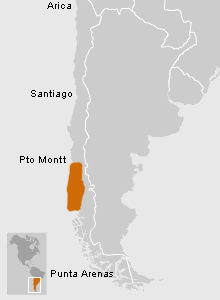The Chonos occupied the islands of Western Patagonia from latitude 43°–48° South. This region includes the Chiloé and “Chono” archipelagos up to the Taitao Peninsula and Penas Gulf. These archipelagos were formed from the peaks of the submerged Coastal Mountain Range and are a veritable labyrinth of islands, canals and fiords. The 1,047 islands are covered in dense rainforest that makes travel on land difficult, and there are few beaches for landing watercraft. The zone is characterized by consistently high rainfall of more than 2000 mm per year and average temperatures of 7°–9º C (45-48°F).
How to Arrive
El Museo se encuentra ubicado en pleno centro de Santiago, en la esquina de las calles Bandera y Compañía, a una cuadra de la Plaza de Armas.
Tickets
Chileans and resident foreigners: $1,000 Foreigners: $8,000 Chilean students and resident foreigners: $500 Foreign students: $4,000
Guided Visit
El Museo cuenta con un servicio de guías, sin costo adicional, para los establecimientos educacionales.
Information for Teachers
Invitamos especialmente a coordinarse con alguno de nuestros guías para programar una visita o actividades de motivación y seguimiento que aprovechen de la mejor forma la experiencia de visitarnos.
Audioguides
Download recordings of the Permanent Exhibition display texts in English, French, Portuguese and Spanish here. These audioguides are in mp3 format and are arranged by cultural area, following the same order as our exhibit galleries. Descargue desde esta página audioguías en castellano, inglés, francés y portugués con los textos de las vitrinas de la […]






































